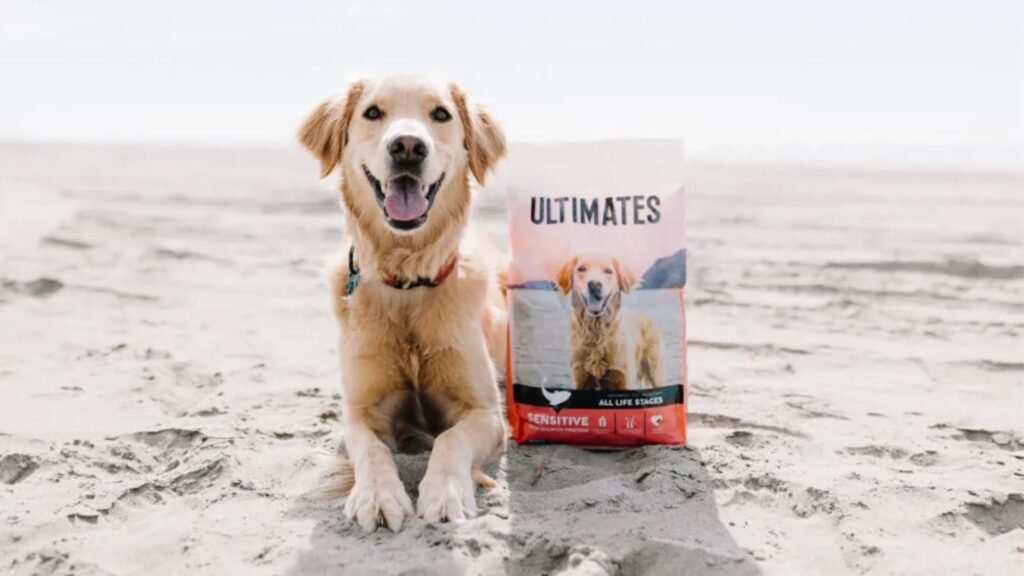Finding the right nutrition for dogs with food sensitivities can be overwhelming. For pet owners dealing with issues like vomiting, diarrhea, itchy skin, or chronic digestive upset, choosing the right can make a life-changing difference. This comprehensive guide explores everything you need to know about feeding your sensitive pup with the best diet for comfort, health, and happiness.
What Is Hypoallergenic Dog Food?
Hypoallergenic dog food is specially formulated to minimize allergic reactions and digestive distress. Unlike regular kibble or canned food, it contains limited ingredients and avoids common allergens like beef, dairy, wheat, and chicken.
Key Features of Hypoallergenic Dog Food:
- Limited ingredient formulas
- Novel protein sources (like venison, duck, or salmon)
- Grain-free or gluten-free options
- No artificial colors, preservatives, or fillers
This type of food is ideal for dogs suffering from food allergies, intolerances, or sensitive stomachs.
Signs Your Dog Needs Hypoallergenic Dog Food

Recognizing the signs of food allergies or intolerances is the first step toward healing. If your dog shows the following symptoms, a switch to hypoallergenic dog food may help:
- Frequent vomiting or diarrhea
- Excessive gas or bloating
- Itchy skin or chronic scratching
- Hot spots or skin infections
- Red, irritated ears
- Hair loss or dull coat
- Lack of appetite or lethargy
Many of these symptoms resolve within weeks of switching to a hypoallergenic dog food tailored to their digestive needs.
Common Dog Food Allergens to Avoid
Before choosing a new food, it helps to know the most common ingredients that cause allergic reactions in dogs:
- Beef
- Chicken
- Dairy
- Wheat
- Soy
- Eggs
- Corn
A high-quality hypoallergenic dog food avoids or limits these ingredients, using gentler, less reactive alternatives.
Types of Hypoallergenic Dog Food
Several types of hypoallergenic dog food are available to address varying levels of sensitivity and allergy severity.
1. Limited Ingredient Diets (LID)
These contain fewer ingredients to minimize the chance of allergic reactions. Each formula typically uses one protein and one carbohydrate source.
2. Novel Protein Diets
These use unique proteins your dog hasn’t been exposed to before, like rabbit, kangaroo, venison, or duck.
3. Hydrolyzed Protein Diets
Proteins are broken down into tiny particles that the immune system doesn’t recognize as allergens. This option is usually recommended for dogs with severe allergies.
4. Grain-Free Hypoallergenic Dog Food
Removes grains like corn, wheat, or barley to prevent sensitivity reactions in gluten-intolerant dogs.
5. Prescription Hypoallergenic Formulas
Available through veterinarians, these are designed for dogs with diagnosed food allergies or inflammatory bowel disease (IBD).
Best Hypoallergenic Dog Food Brands for Sensitive Stomachs

Here are some top-rated dog food options that have helped thousands of dogs regain comfort and energy:
1. Hill’s Prescription Diet z/d
A veterinary-approved hydrolyzed protein formula ideal for severe allergies.
2. Blue Buffalo Basics Limited Ingredient Diet
Contains turkey and potato—simple, easily digestible ingredients for sensitive pups.
3. Natural Balance L.I.D.
Offers a wide range of novel protein options like duck, venison, and fish with limited ingredients.
4. Royal Canin Hydrolyzed Protein
One of the best prescription hypoallergenic dog food choices for extreme sensitivities.
5. Wellness Simple Limited Ingredient
Uses high-quality ingredients like salmon and potato, perfect for sensitive stomachs.
6. Canidae PURE
Grain-free and limited-ingredient with multiple protein options, such as lamb, bison, or duck.
7. Purina Pro Plan Veterinary Diets HA
A clinically tested hydrolyzed protein formula recommended by vets for long-term allergy management.
Each of these brands delivers safe and nutrient-rich hypoallergenic dog food with proven results in managing digestive and skin symptoms.
How to Switch to Hypoallergenic Dog Food Safely
Switching your dog’s food too quickly can make symptoms worse. Here’s a proper transition schedule to follow:
- Days 1–2: 25% new food + 75% current food
- Days 3–4: 50% new food + 50% current food
- Days 5–6: 75% new food + 25% current food
- Day 7+: 100% new food
During this time, monitor your dog for any side effects or allergic reactions. Most dogs adjust to hypoallergenic dog food within 1–2 weeks.
Benefits of Hypoallergenic Dog Food
Choosing the right diet brings a host of health benefits for your dog:
- Improved digestion: Less gas, bloating, and diarrhea
- Healthier skin and coat: Reduced itching, shedding, and dandruff
- Boosted immune response: Fewer infections and inflammation
- Increased energy: Better nutrient absorption and comfort
- Longer lifespan: Enhanced overall wellness
Many pet owners notice improvements within just two weeks of switching to dog food.
Homemade Hypoallergenic Dog Food Recipes
If you prefer to prepare meals at home, here are simple, dog-safe recipes that work well for sensitive stomachs:
Turkey and Sweet Potato Stew
- Ground turkey (lean)
- Boiled sweet potatoes
- Carrots
- Coconut oil
Salmon and Quinoa Mix
- Cooked salmon (boneless)
- Cooked quinoa
- Spinach (steamed)
- Olive oil
Duck and Pumpkin Bowl
- Ground duck
- Pumpkin puree
- Green beans
- Flaxseed oil
While homemade meals offer full ingredient control, they must be nutritionally balanced. Always consult a vet before replacing commercial hypoallergenic dog food with home-cooked diets.
Cost of Hypoallergenic Dog Food
The average price of hypoallergenic dog food ranges from $2 to $6 per pound, depending on the formula and brand. Prescription diets are generally more expensive than over-the-counter options, but may be covered under pet insurance.
Investing in quality food now can prevent costly vet visits later due to untreated allergies or digestive problems.
Vet Advice: Choosing the Right Hypoallergenic Food

Veterinarians emphasize these key points when selecting hypoallergenic dog food:
- Start with a limited-ingredient, over-the-counter formula
- If symptoms persist, consider prescription hydrolyzed diets
- Avoid treats or table scraps during the trial period
- Keep a food journal to track progress
Vets often recommend food trials lasting 8–12 weeks to fully assess how your dog responds to the new hypoallergenic dog food.
FAQs About Hypoallergenic Dog Food for Sensitive Stomachs
1. What is the best hypoallergenic dog food for puppies?
Look for LID or grain-free formulas made for growth. Consult your vet for puppy-specific options.
2. Can I feed hypoallergenic food to healthy dogs?
Yes. It’s safe and often beneficial for coat health and digestion, even in non-sensitive dogs.
3. How long before I see results?
Most dogs show improvement in 2–4 weeks, with full results after 8–12 weeks.
4. Is hypoallergenic dog food grain-free?
Not always. Some include easy-to-digest grains like oatmeal or rice. Grain-free is a subset of hypoallergenic diets.
5. Can allergies come back after switching?
Yes, especially if you reintroduce problem ingredients. Stick to safe treats and avoid known allergens.
Final Thoughts: Choosing Hypoallergenic Dog Food for Sensitive Dogs
When your dog suffers from digestive problems or food allergies, switching to hypoallergenic dog food is often the best solution. By avoiding common allergens and focusing on gentle, nutrient-rich ingredients, you can restore your pet’s health from the inside out.
Whether you opt for a limited-ingredient formula, a novel protein source, or a vet-prescribed hydrolyzed diet, consistency is key. Track your dog’s reactions, maintain a strict feeding routine, and avoid table scraps that could trigger symptoms.
With the right hypoallergenic dog food, your dog can live comfortably, energetically, and allergy-free.
